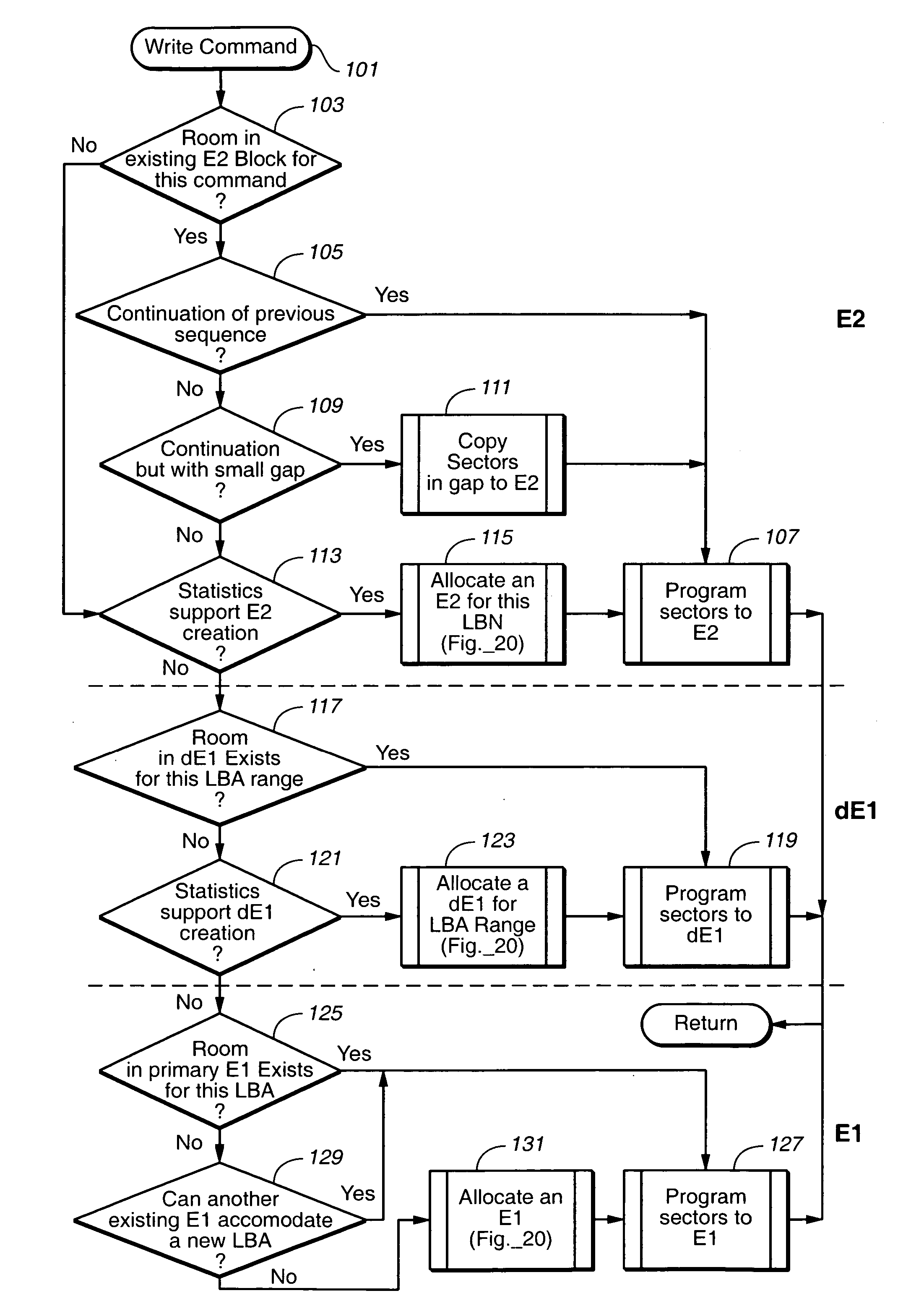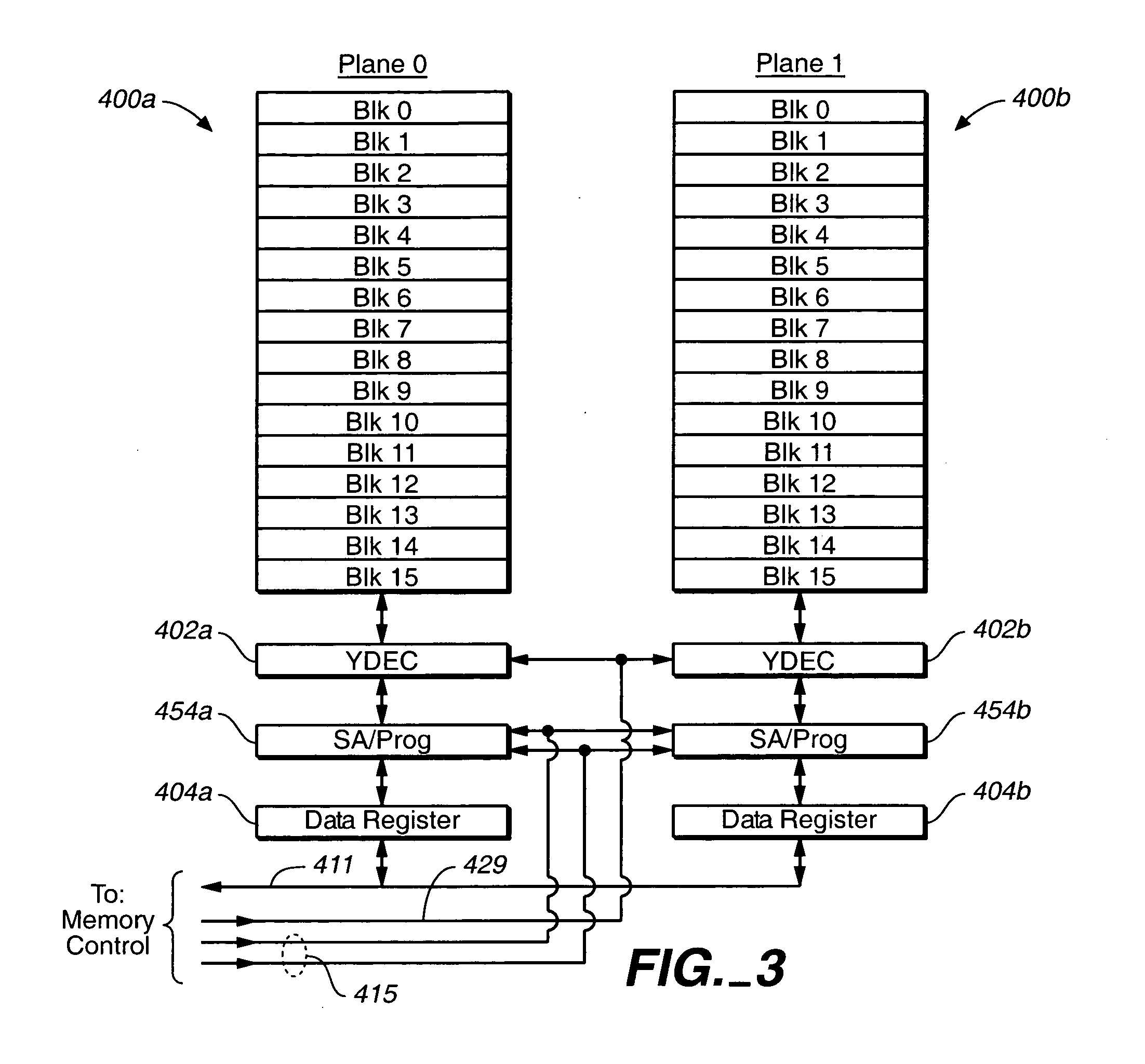Management of non-volatile memory systems having large erase blocks
a non-volatile memory and erase block technology, applied in the direction of memory address formation, memory allocation/allocation/relocation, instruments, etc., can solve the problems of frequent garbage collection and adversely affect system performance, and achieve high-performance operation, reduce the amount of data consolidation, and improve system performance
- Summary
- Abstract
- Description
- Claims
- Application Information
AI Technical Summary
Benefits of technology
Problems solved by technology
Method used
Image
Examples
Embodiment Construction
[0059] The trend in the development of flash EEPROM systems is to increase significantly the number of memory cells, and thus the amount of data stored, in the individual blocks in order to reduce the cost of manufacturing the integrated memory circuit chips. A block size of something like 512 or 1024 sectors of data (528 bytes each) is contemplated, thus having an individual capacity of 270,336 or 540,672 bytes of user and overhead data. If only one sector is included in a page, then there are the same number of pages but the trend is also to increase the amount of data that is programmed as part of one programming operation by including two, or perhaps more, data sectors in each page, in which case the number of pages in a block that stores a given number of sectors of data is reduced. But regardless of the details of any particular implementation, the existing techniques described above for updating only a portion of the data in a block increases the adverse effect on memory perf...
PUM
 Login to View More
Login to View More Abstract
Description
Claims
Application Information
 Login to View More
Login to View More - R&D
- Intellectual Property
- Life Sciences
- Materials
- Tech Scout
- Unparalleled Data Quality
- Higher Quality Content
- 60% Fewer Hallucinations
Browse by: Latest US Patents, China's latest patents, Technical Efficacy Thesaurus, Application Domain, Technology Topic, Popular Technical Reports.
© 2025 PatSnap. All rights reserved.Legal|Privacy policy|Modern Slavery Act Transparency Statement|Sitemap|About US| Contact US: help@patsnap.com



